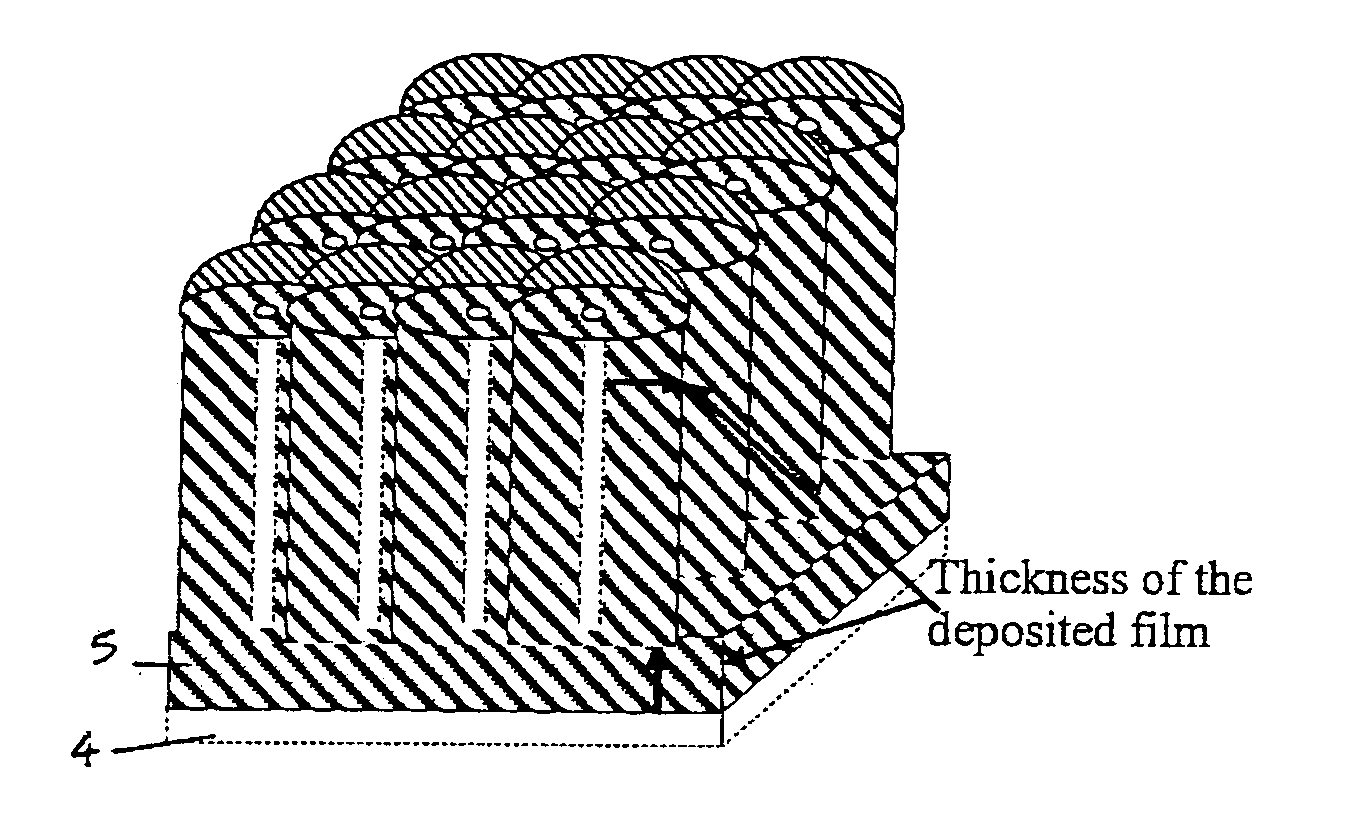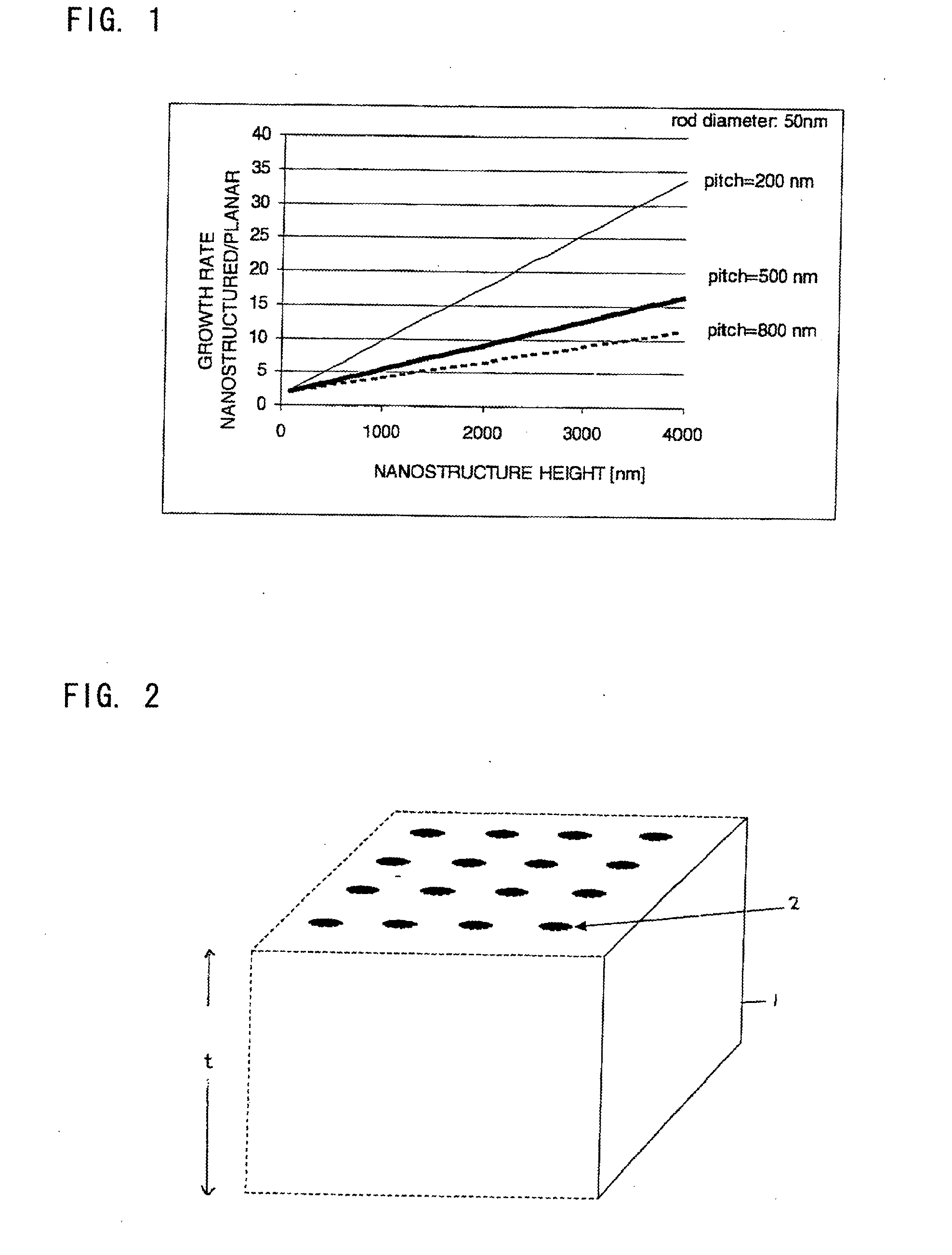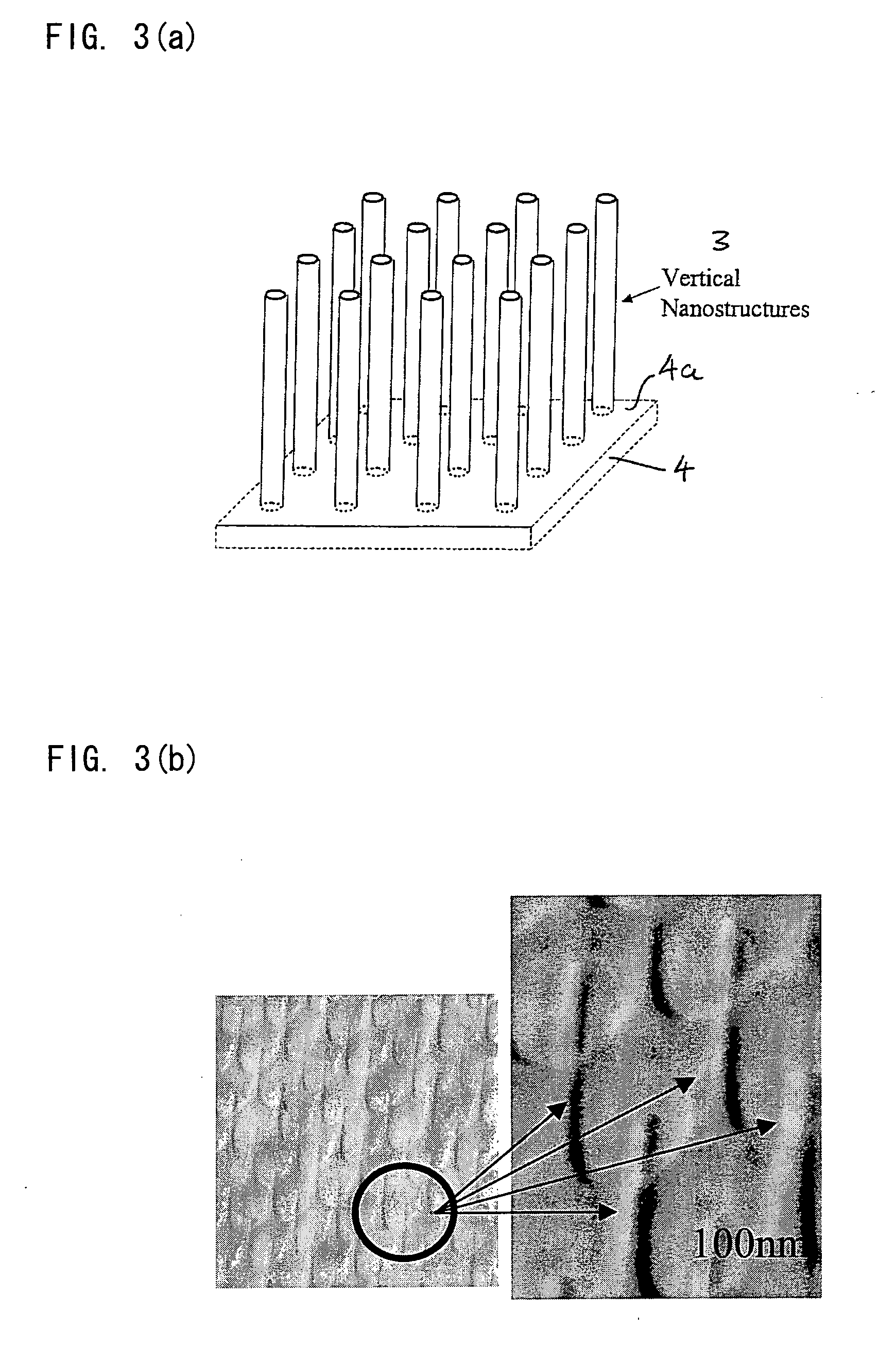Method of growing a thin film, a method of forming a structure and a device
a thin film and structure technology, applied in the direction of sustainable manufacturing/processing, semiconductor/solid-state device details, instruments, etc., can solve the problems of not meeting the requirements of any of these methods, unable to achieve one preferred and well-controlled growth direction, and unable to achieve the desired device performance. achieve the effect of improving the quality accelerating the growth rate of the thin film, and controlling the rough surface of the final top surfa
- Summary
- Abstract
- Description
- Claims
- Application Information
AI Technical Summary
Benefits of technology
Problems solved by technology
Method used
Image
Examples
Embodiment Construction
[0122]In a preferred embodiment according to FIG. 2a substrate 1 of thickness t with an appropriately patterned etch mask 2 is provided. The patterned etch mask 2 can be defined by lithographic means.
[0123]Subsequently a substantially anisotropic, subtractive process is used to create the nanostructures 3 on substrate 4 (FIG. 3(a)). Optionally, the nanostructures 3 are formed so that they have a uniform or substantially uniform pitch and / or have a uniform or substantially uniform length. Optionally, the nanostructures 3 are formed so that the structures are identical or substantially identical to one another.
[0124]If desired, the nanostructures can be thinned further using an isotropic etch process. This may also change the shape of the structures in a preferred way (e.g. by providing a taper).
[0125]The etch mask 2 may be removed if desired, once the / all etching steps are complete.
[0126]The etch mask 2 may for example comprise a metal (e.g. Al, Au, W) or a nitride (e.g. Si3N4).
[0127...
PUM
| Property | Measurement | Unit |
|---|---|---|
| angle | aaaaa | aaaaa |
| angle | aaaaa | aaaaa |
| angle | aaaaa | aaaaa |
Abstract
Description
Claims
Application Information
 Login to View More
Login to View More - R&D
- Intellectual Property
- Life Sciences
- Materials
- Tech Scout
- Unparalleled Data Quality
- Higher Quality Content
- 60% Fewer Hallucinations
Browse by: Latest US Patents, China's latest patents, Technical Efficacy Thesaurus, Application Domain, Technology Topic, Popular Technical Reports.
© 2025 PatSnap. All rights reserved.Legal|Privacy policy|Modern Slavery Act Transparency Statement|Sitemap|About US| Contact US: help@patsnap.com



